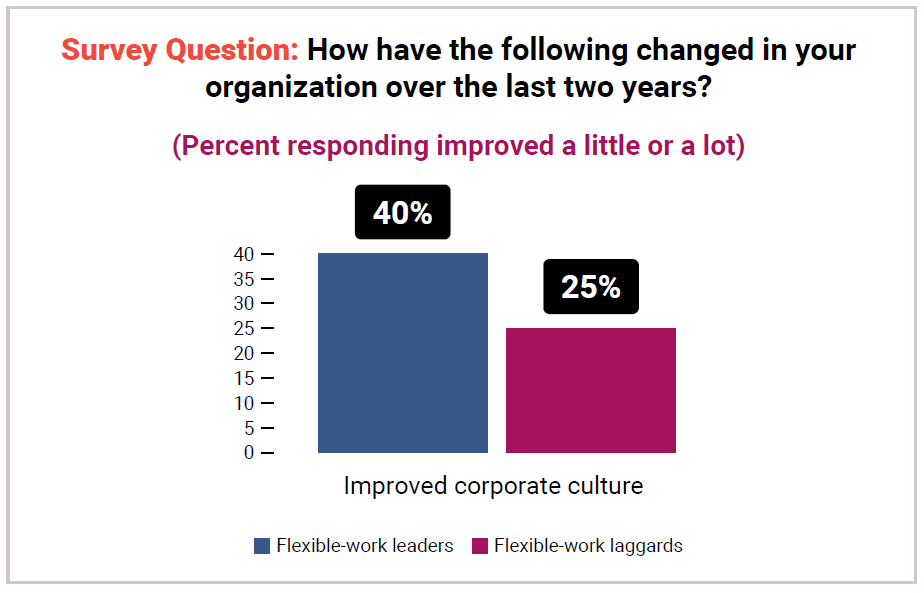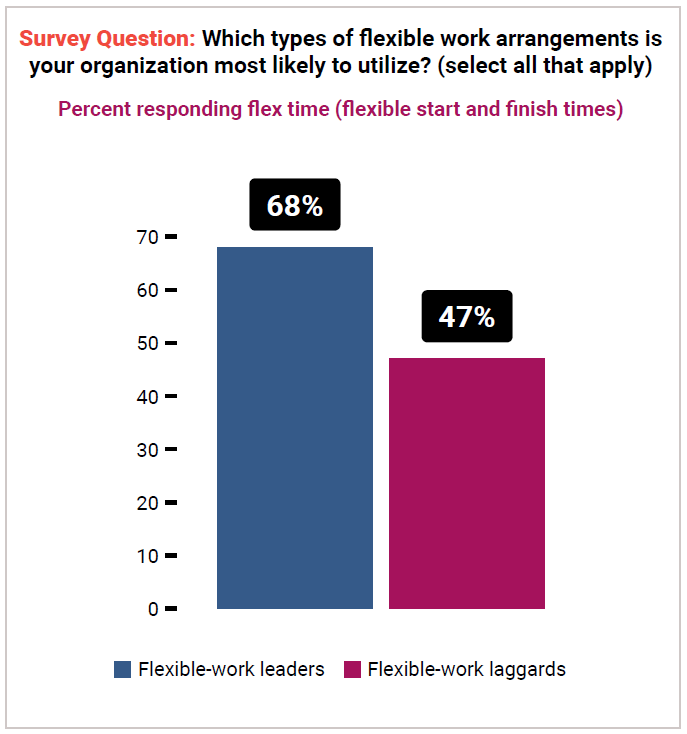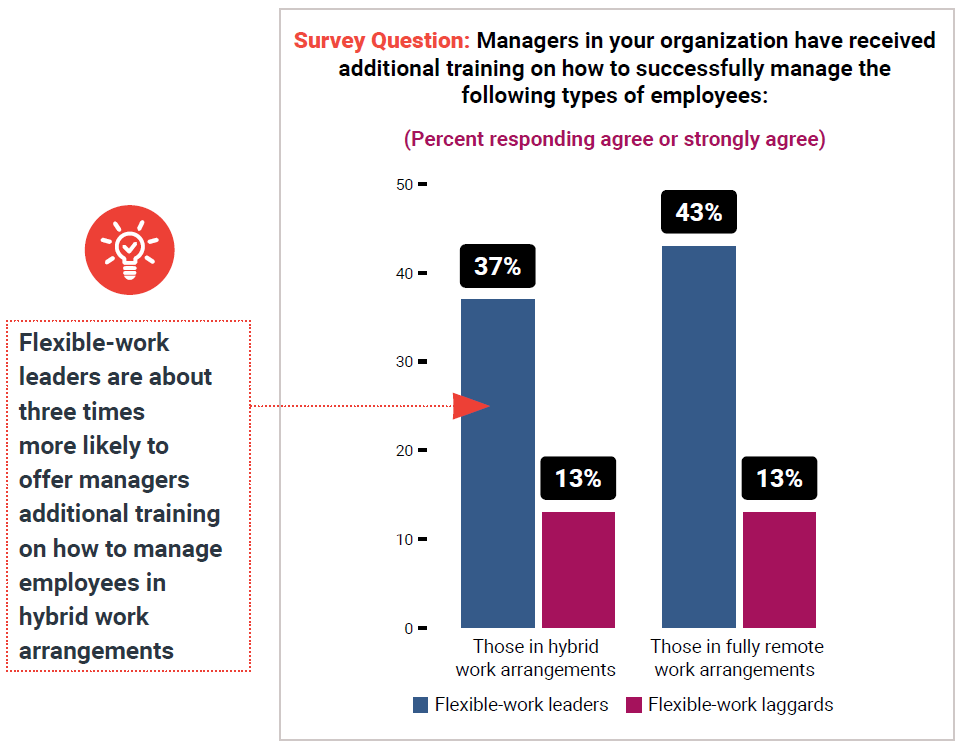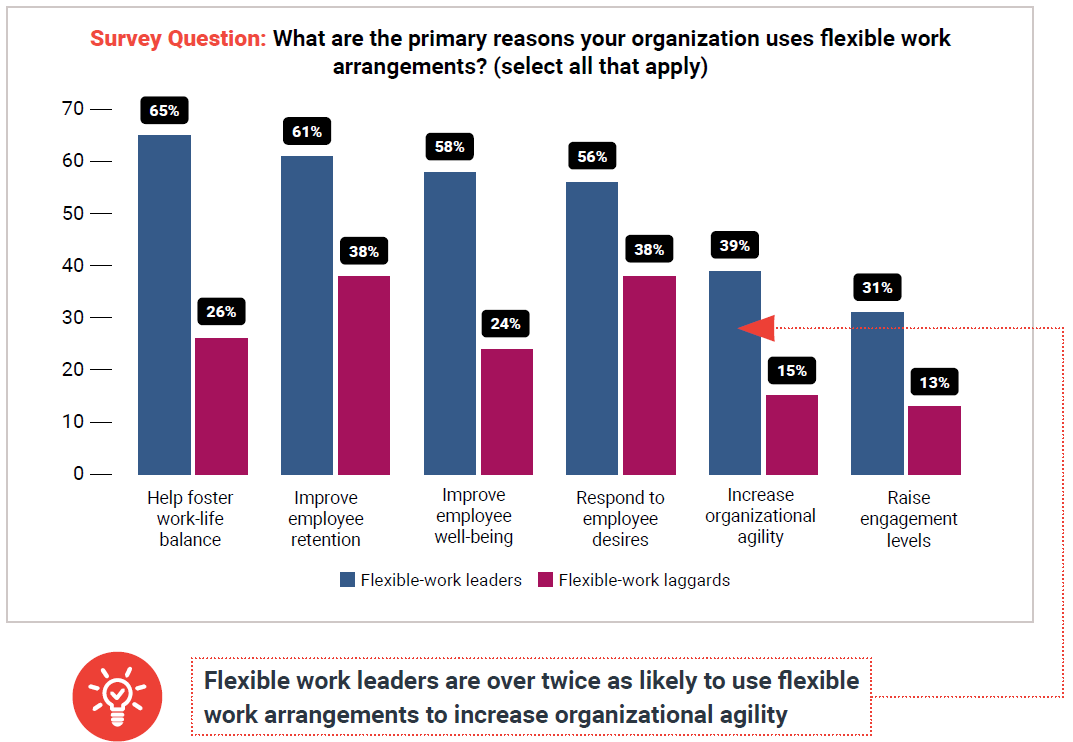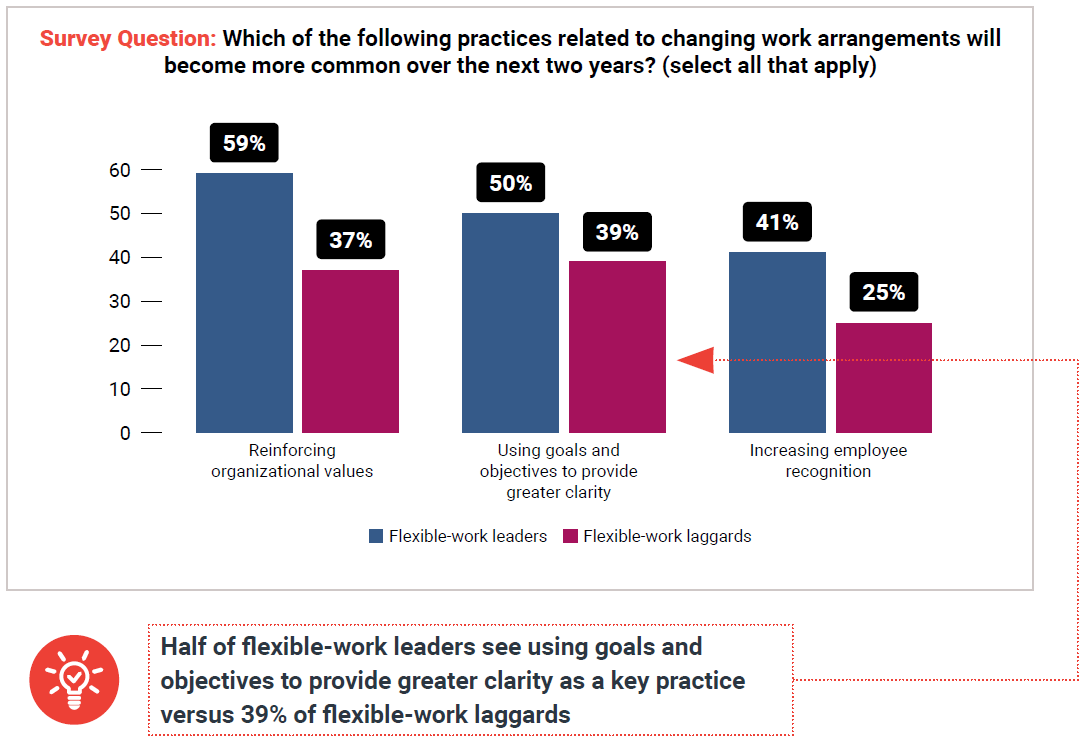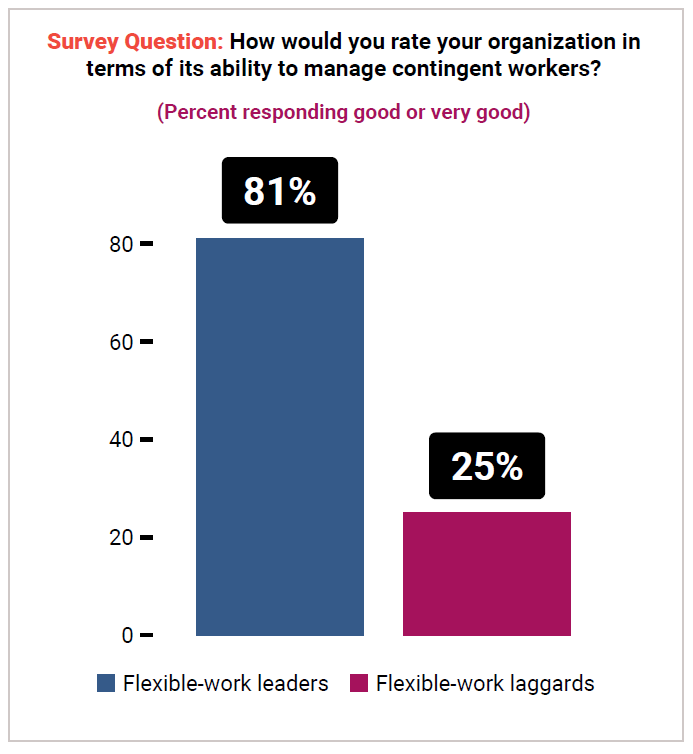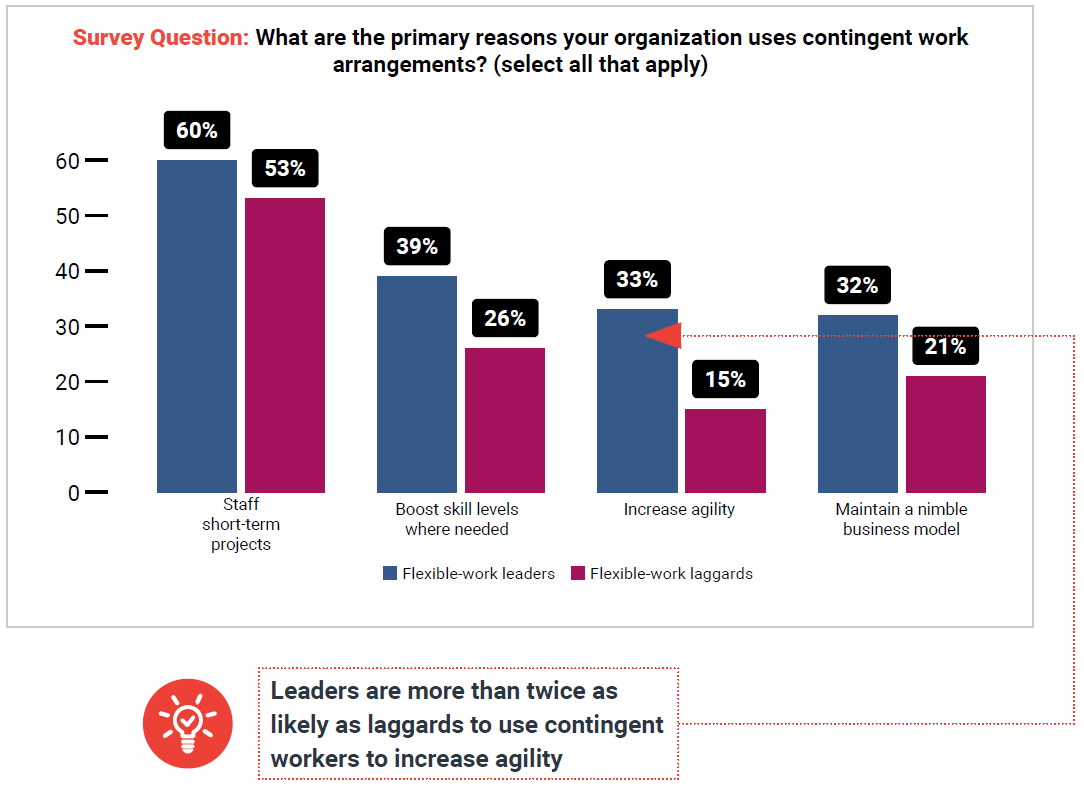To better understand potential best practices in flexible work arrangements, we divided our survey participants into two cohorts:
- Flexible-work leaders: Those who answered good or very good to the question: “How would you rate your organization in terms of its ability to manage workers engaged in flexible work arrangements?”
- Flexible-work laggards: Those who answered fair, poor or very poor to the same question.
Generally speaking, we found that flexible work arrangements are associated with a variety of organizational advantages. Of course, correlation is not the same as causation. While we cannot state that any particular flexible-work practice will improve the employee experience, we do see intriguing relationships that may, if used judiciously, result in a boost in employee experience.
Flexible-work leaders are more likely to show improvements in corporate culture
Flexible-work leaders are more likely to have improved corporate culture as well as their organizational work arrangements over the last two years. Forty percent of the leaders improved their culture a little or a lot whereas the same was true for just 25% of laggards.
Flexible-work leaders are considerably more likely to offer flex time
Flexible-work leaders are more likely than laggards to offer most types of flexible work arrangements, but the largest difference is in the area of flex time. While over two-thirds of leaders offer flex time (68%), the percentage for laggards is only 47%.
Flexible-work leaders are more likely to offer additional training to managers
Leaders are more inclined to recognize the importance of some additional training on how to successfully manage flexible-work employees. More than a third (37%) of flexible-work leaders say they offer additional training to managers on how to successfully manage employees in fully remote settings and 43% say the same about hybrid employees. To contrast, just 13% of laggards say the same in both cases. Moreover, no respondents in the laggard cohort strongly agree with these statements.
This additional training may be one of the main reasons flexible-work leaders are better at managing workers with flexible arrangements.
Flexible-work leaders often use flexible work arrangements to benefit employees’ well-being
The primary reason that the two cohorts use flexible work arrangements is to cope with pandemic-related issues. Flexible-work leaders are, however, more likely to cite a variety of other reasons.
Many of these top reasons have to do with the employee experience.
For example, 65% of flexible-work leaders say that they use flexible work arrangements to help foster work-life balance, but just 26% of laggards say the same.
Nearly three-fifths of flexiblework leaders say they will reinforce organizational values in the next two years
Flexible-work leaders are more likely to reinforce organizational values over the next two years. This might help them further improve their corporate cultures. Leaders are also more likely to focus on increasing employee recognition and using goals and objectives to create greater employee recognition. These are practices that all organizations should focus on in the coming years to fuel the success of their alternate work arrangements.
Flexible-work leaders are more than three times more likely than laggards to say they manage contingent workers well
Eighty-one percent of flexible-work leaders say their organization is good or very good at managing contingent workers. By comparison, only 25% of flexible-work laggards say so. While the variable we used to divide our sample into two cohorts was based on their ability to manage employees with flexible work arrangements, we consider the use of contingent workers a subset of flexible work.
Flexible-work leaders are more likely to use contingent workers for a variety of reasons
We asked about several possible reasons for using contingent workers. Flexible-work leaders are more likely than laggards to select these reasons. For example, only 15% of laggards say increasing agility is a primary reason to use contingent work arrangements, whereas leaders are more than twice as likely to say the same (33%). It appears that laggards use contingent workers for more immediate, tactical needs whereas leaders tend to use contingent workers for more strategic reasons.
